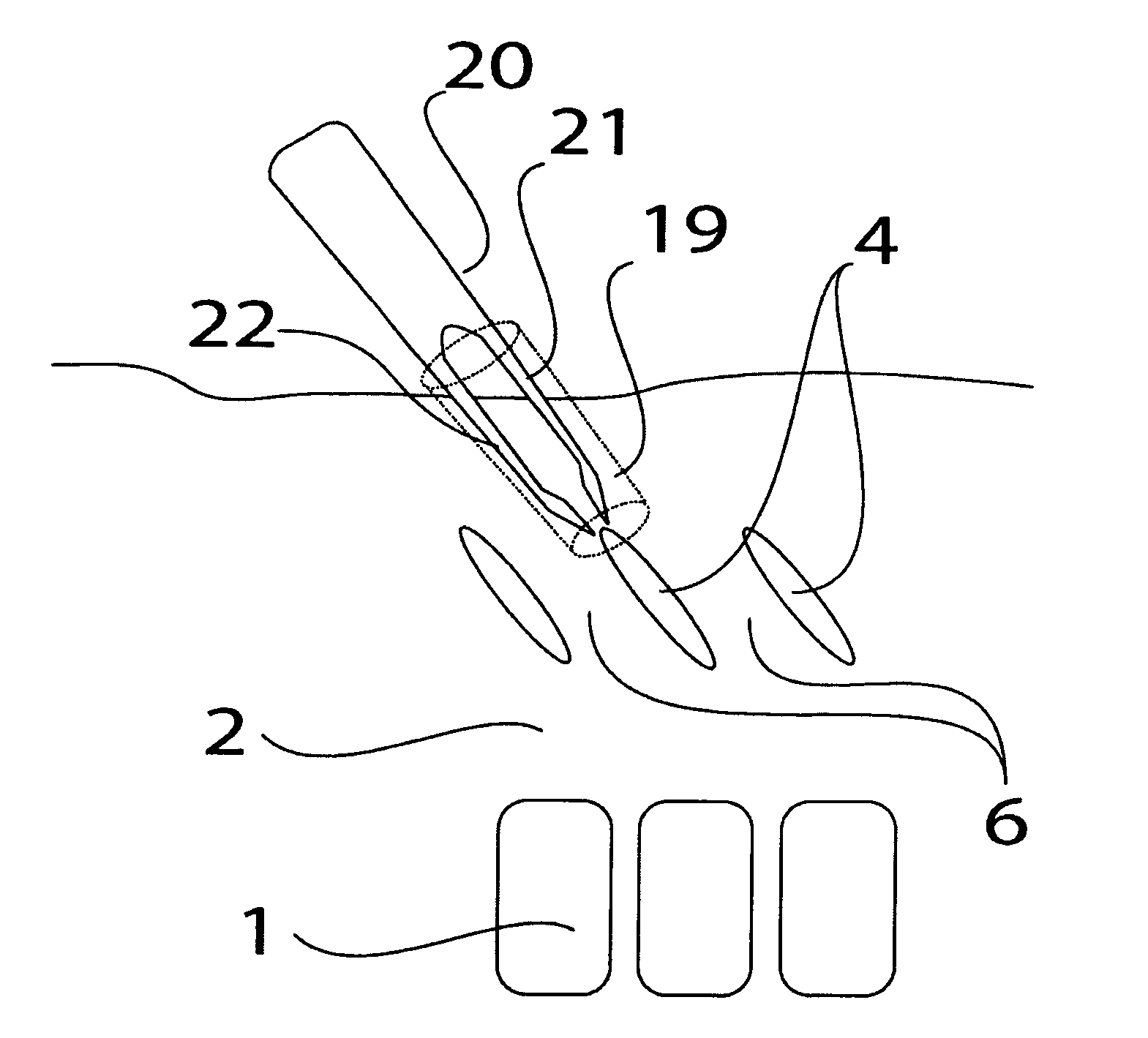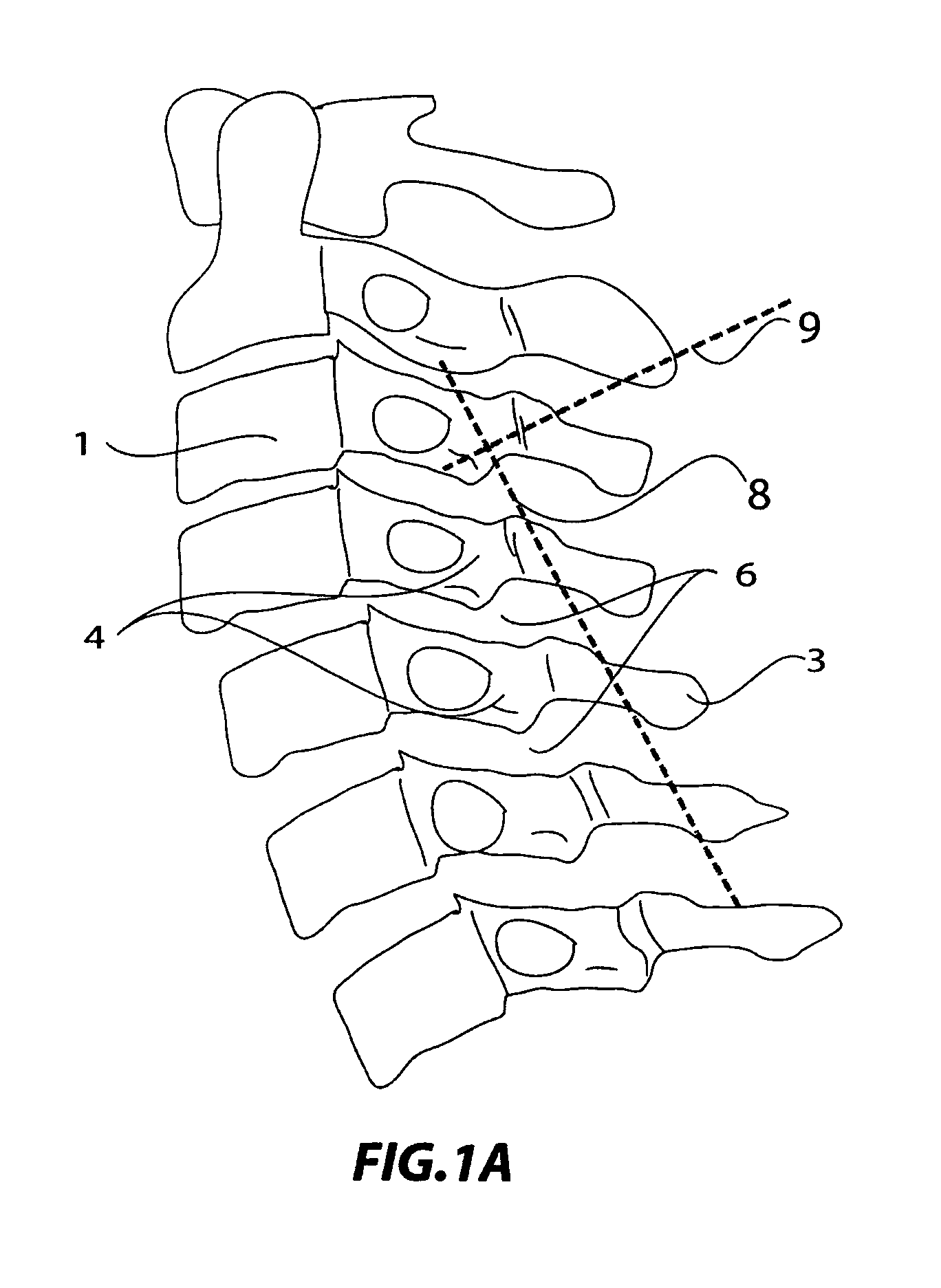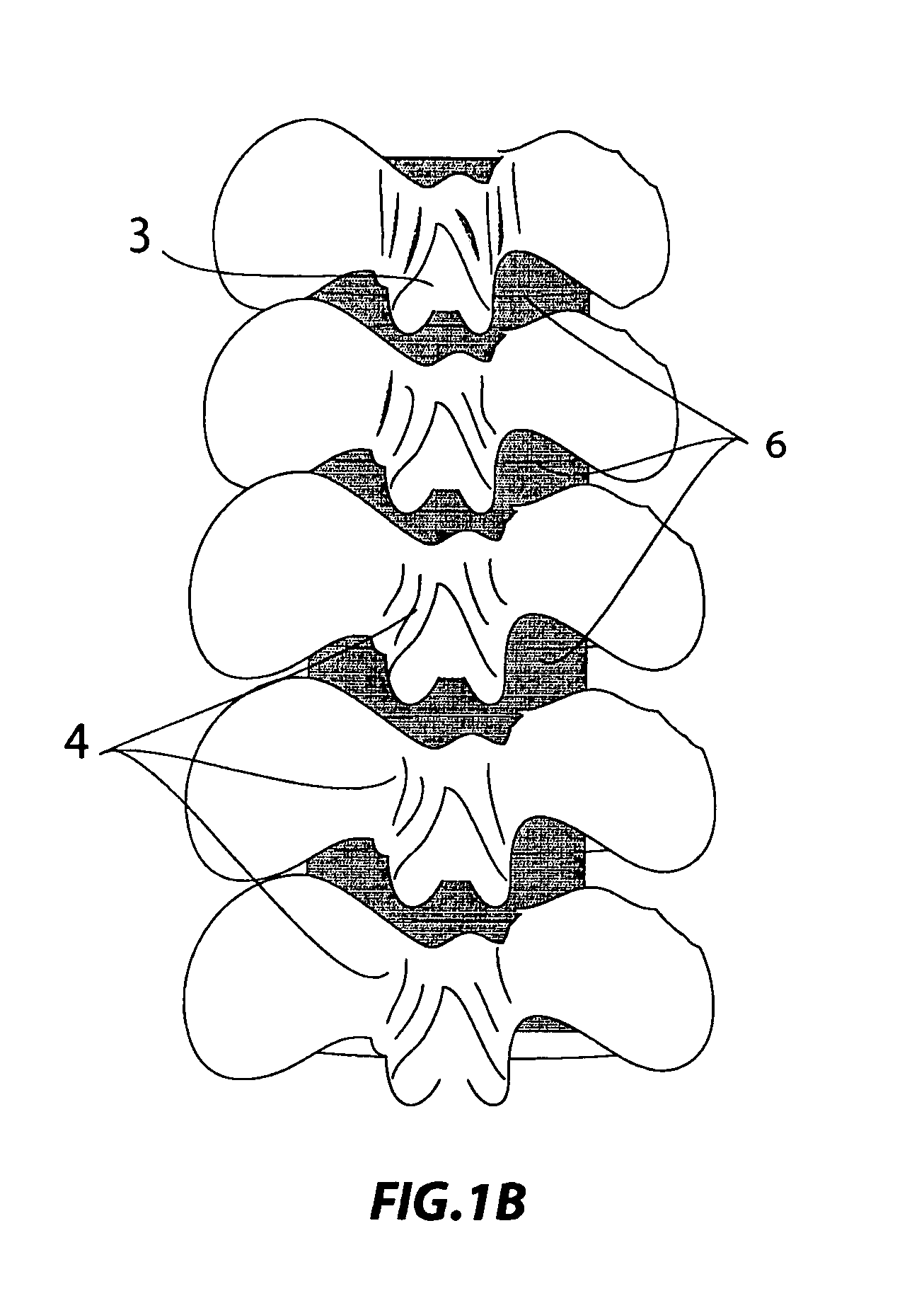Technique and device for laminar osteotomy and laminoplasty
a technology of laminar osteotomy and laminoplasty, applied in the field of minimally invasive surgery, can solve the problems of extensive recovery time for patients, back and leg pain, spinal instability,
- Summary
- Abstract
- Description
- Claims
- Application Information
AI Technical Summary
Benefits of technology
Problems solved by technology
Method used
Image
Examples
Embodiment Construction
[0041]Preferred embodiments, methods and aspects of surgical implantable devices to be used in dividing of the spinal lamina and elevation of the posterior wall of the spinal central canal are described in this section. This reshaping of the lamina, or laminoplasty results in the creation of more space for the neuronal elements in the spinal central canal. This method is of particular benefit since it can be performed through a small incision under CT, MRI, or other image guidance. Furthermore, the technique can be applied to the cervical, thoracic, and lumbar levels of the spine of any vertebrate.
[0042]FIGS. 1-2 show lateral, posterior, and axial views of cervical and lumbar vertebrae respectively. Thoracic vertebra are not drawn as they are similar in the anatomical region relevant to this description. The vertebral bodies 1 create the anterior wall of the central canal 2. The spinous process 3 is a midline bony prominence where the lamina 4 meet. This process elevates the divided...
PUM
 Login to View More
Login to View More Abstract
Description
Claims
Application Information
 Login to View More
Login to View More - R&D
- Intellectual Property
- Life Sciences
- Materials
- Tech Scout
- Unparalleled Data Quality
- Higher Quality Content
- 60% Fewer Hallucinations
Browse by: Latest US Patents, China's latest patents, Technical Efficacy Thesaurus, Application Domain, Technology Topic, Popular Technical Reports.
© 2025 PatSnap. All rights reserved.Legal|Privacy policy|Modern Slavery Act Transparency Statement|Sitemap|About US| Contact US: help@patsnap.com



